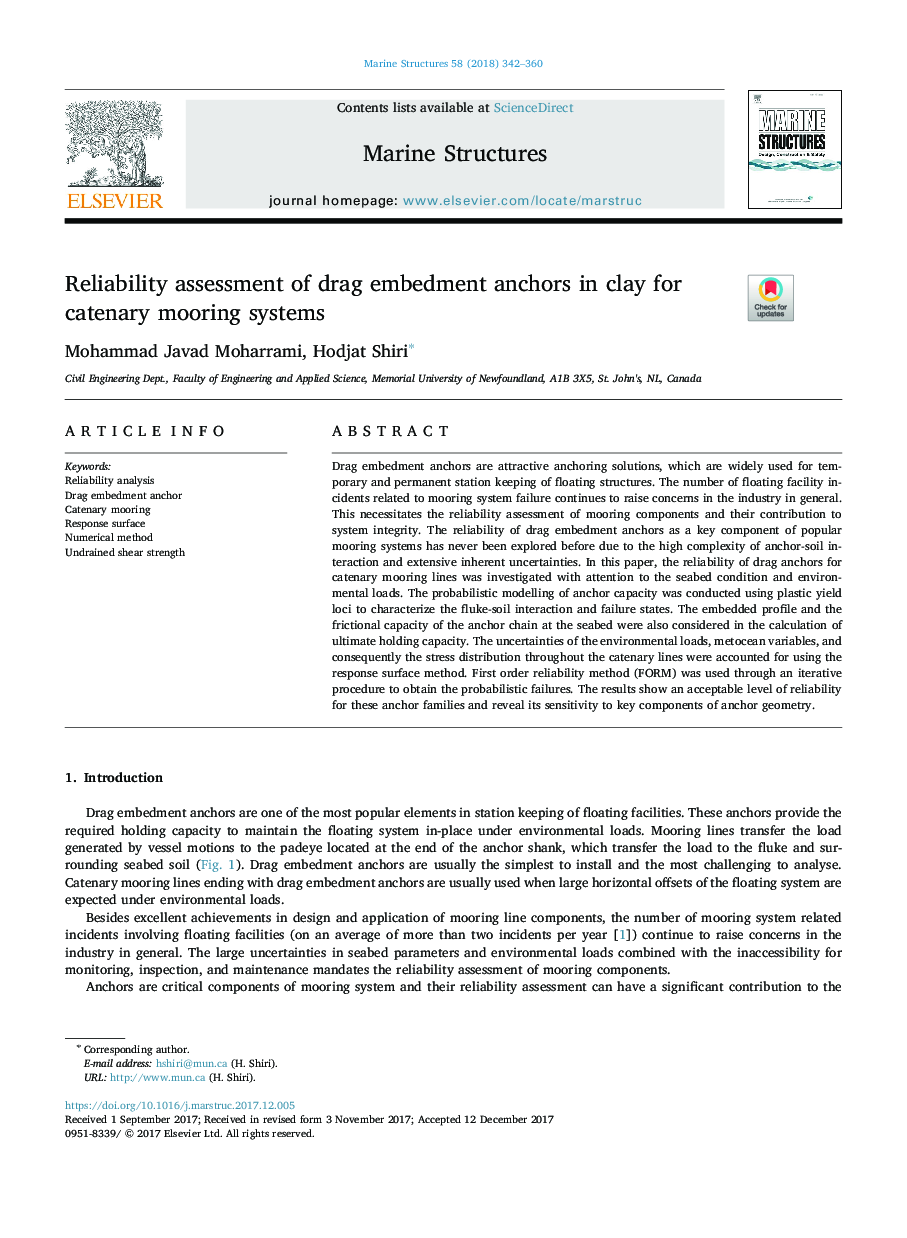| Article ID | Journal | Published Year | Pages | File Type |
|---|---|---|---|---|
| 6758067 | Marine Structures | 2018 | 19 Pages |
Abstract
Drag embedment anchors are attractive anchoring solutions, which are widely used for temporary and permanent station keeping of floating structures. The number of floating facility incidents related to mooring system failure continues to raise concerns in the industry in general. This necessitates the reliability assessment of mooring components and their contribution to system integrity. The reliability of drag embedment anchors as a key component of popular mooring systems has never been explored before due to the high complexity of anchor-soil interaction and extensive inherent uncertainties. In this paper, the reliability of drag anchors for catenary mooring lines was investigated with attention to the seabed condition and environmental loads. The probabilistic modelling of anchor capacity was conducted using plastic yield loci to characterize the fluke-soil interaction and failure states. The embedded profile and the frictional capacity of the anchor chain at the seabed were also considered in the calculation of ultimate holding capacity. The uncertainties of the environmental loads, metocean variables, and consequently the stress distribution throughout the catenary lines were accounted for using the response surface method. First order reliability method (FORM) was used through an iterative procedure to obtain the probabilistic failures. The results show an acceptable level of reliability for these anchor families and reveal its sensitivity to key components of anchor geometry.
Keywords
Related Topics
Physical Sciences and Engineering
Engineering
Civil and Structural Engineering
Authors
Mohammad Javad Moharrami, Hodjat Shiri,
